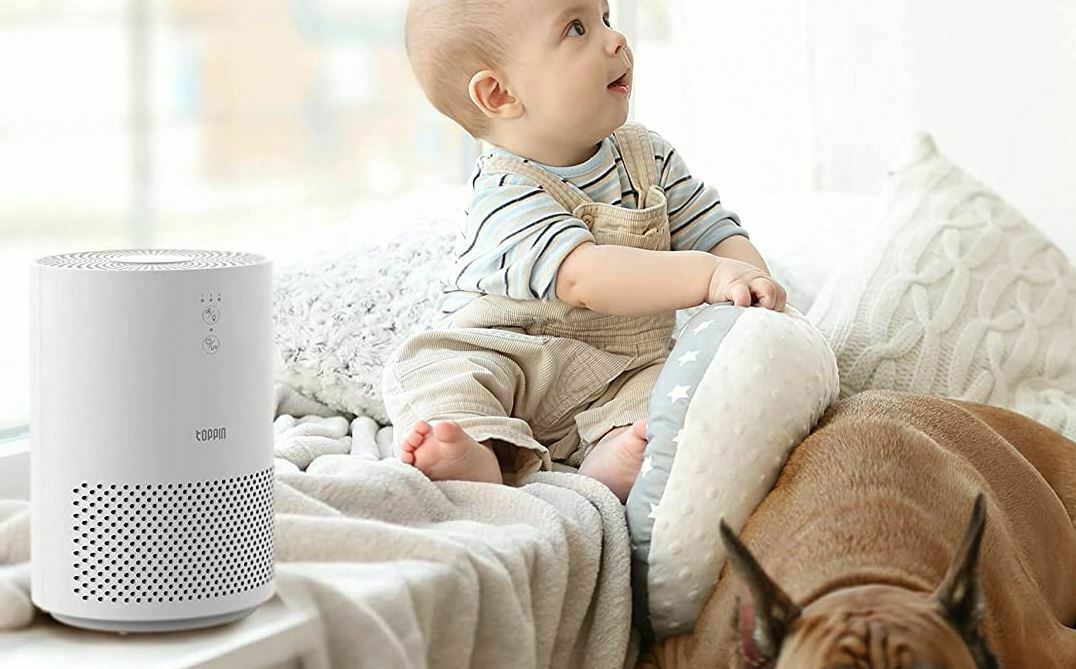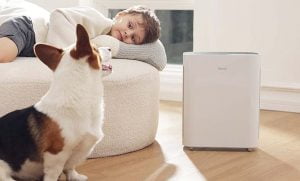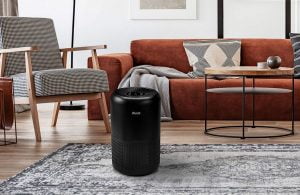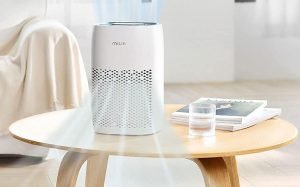Choosing an Air Purifier Correctly
Choosing an air purifier is not as confusing as many people think it would be.
Yes, there is an overwhelming choice of air purifiers out there. But here is a little secret. As long as you know the evaluation criteria for a good air purifier, you’re set.
This is what this air purifier guide is set out to do. This air purifier guide gives you enough air purifier information so that you can be confident in choosing an air purifier. You will learn how to differentiate between a good air purifier and a lemon. You will know what features are paramount in order for an air purifier to be effective, and what features to avoid.
Before you start the business of choosing air purifier, first, you need to know for sure whether you really need an indoor air purifier and whether an air purifier is worth it for your situation. Once you know that you need one, you should evaluate why you need an air purifier and where you would like an air purifier to be located (You can contemplate on what kind of indoor air purifiers are best for your needs by reading this article). Once you finish this step, you can start choosing air purifier based on these following criteria:
Safety
An air purifier is supposed to improve your life. However, we found that not all purifiers are harmless. Over the years, there have been air cleaners which are found to be unsafe. The sad thing is that those air purifiers were amongst the ranks of well known home air purifiers with thousands, if not tens of thousands, units sold.
The safety of an air cleaner is closely linked to the air purification system it uses to purify the air.
One of the technologies which can be employed by air purifiers is ozone. These air purifiers are designed to emit a high-quantity of ozone to clean up and sanitize dirty air and this method is often used for industrial purpose (i.e. for cleaning up empty areas or houses where natural disaster, such as flood, struck).
You may have heard that ozone is good for you. However, when found on earth atmosphere, ozone can irritate the respiratory tract and is definitely not good for you.
Unfortunately, manufacturers for home or indoor air purifiers also make ozone generator which they claim to be safe enough to use indoor. Granted, when operated properly, they are within EPA (Environmental Protection Agency) ozone limits, which is 0.05 ppm.
However, the EPA found that often, the direction is not clear and precise enough. Hence a lot of consumers use this type of indoor air purifier in the wrong way. This can endanger their health. (More on ozone air purifier discussion here.)
In addition, there are other types of air cleaners which use air purification technologies, which can emit ozone as a by-product. The amount of ozone emitted is small. However, people who have lung diseases including asthma patients should avoid such purifiers since their lungs are already sensitive and easily irritated. Therefore, if you had such diseases, it’s wise to choose air purifier which does not emit ozone at all.
In order to make informed decision when choosing air purifier, we encourage you to learn how an air purifier works so that you will know what kind of air purifiers is likely to emit ozone and contains other pitfalls which can compromise your health.
In addition, if you had a chemical sensitivity (MCS) issue, then it’s a good idea to buy an air purifier which does not emit other kinds of gas. These gases are usually well-tolerated by normal people, but can irritate people with multiple chemical sensitivity.
(For more discussion on air purifier safety, click here.)
Cleaning Efficiency
Again, when talking about choosing air purifier, the best one is the one which fits your needs. In regards to cleaning efficiency, there are several air purifier information you should take into account:
- The home air purifier system it uses to clean the air. In this respect, it is important to note that each type of air purification technology remove one type of contaminant. In general, the more air purification technique used, the better the purifier in cleaning up the air.
- In general, the best way to get the purification level to up to 0.3 micron is by using an air purifier with a HEPA filter. This will remove dust and particles. However, if you want to capture gas and eliminate odor, then you need a carbon-activated filter embedded in your air purifier so that it can trap volatile organic compound (VOC) gas up to 0.001 micron.
- An indoor air purifier is meant to supplement your effort in creating a healthy indoor air. Hence, even with the best air cleaner, you may not achieve the best indoor air if you did not remove the source of pollution, especially if you have sensitivities to those pollution. For instance, if you have an asthmatic child or spouse, it makes no sense to buy an air cleaner to purify the house if one member of the family smokes. It is much better to have that member of the family to quit smoking in the house rather than spending money to buy air purifier to get rid of the smoke. Another cheap way to instantly improve your indoor air is by using ventilation to the max. This will effectively dilute the polluted indoor air.
- Cleaning efficiency ratings. There are a few things which are taken into account when rating an air purifier with the main criteria being the cleaning efficiency. One popular way to measure cleaning efficiency is by using AHAM’s (Association of Home Appliance Manufacturers) standard called CADR (Clean Air Delivery Rate) which you can usually find at the back of an air cleaner. There are three CADR numbers – one for tobacco smoke, one for pollen and one for dust. The CADR indicates volume of filtered air delivered by an air cleaner. The higher the tobacco smoke, pollen and dust numbers, the faster the unit filters the air. While the number gives you some sense on how well an indoor air purifier performs, it is by no mean an ideal way to test an air purifier. Think about this. If you were an indoor air purifier manufacturer and you know that your products are going to be tested the AHAM’s way, what would you do ? You will make them to get the highest ratings, right ?
- This is the biggest pitfall of this standardized system. It measures an air purifier performance on AHAM’s test condition. Many best air cleaner brands in the market do not get the highest ratings under AHAM’s test condition. Yet, they are the best air purifiers in the market today. So, exercise caution when interpreting the CADR number, and when choosing air purifier, do not instantly rule out the air purifiers which are not rated favorably. You can read more about air purifier ratings here.
The Cost
When choosing air purifier, here are a couple of cost-related things to consider:
- What the initial purchase cost is and the warranty which come with the air purifier.Many customers are lured to buy the cheapest air purifier. While we can understand the financial concern, often, those cheap air purifiers have a short life and do not do the job properly. In addition it may have a high maintenance cost. Therefore, if you have a health problem you want to solve with the help of air purifier, it pays to get a good brand which does the job properly without incurring a high maintenance cost.
- How much the maintenance cost is. A lot of cheap air purifiers often come with a high maintenance costs. It can either be in the form of high cost of prefilter and filter replacement, or that the filter or prefilter gets clogged up so easily they need replacement often. Either way, you end up with one thing. High air purifier maintenance costs. When choosing air purifier, also look at these following features to ensure lower maintenance costs:
- Separate carbon and HEPA filters. A combo of HEPA and carbon filters are cheaper to buy than having to buy both separately. However, if you use the air purifier in areas where one type of pollutants is dominant, then it pays to buy those separately since carbon and HEPA filters address different types of pollutant.
- Filter monitoring feature. Best air cleaner brands like IQAir have a sensor which tells you when the filter needs changing so you only change it when it needs one. Less expensive brands often do not have this feature, and even if they have, the filter monitor uses clocking methodology which does not measure how dirty a filter is. Instead it estimates the dirtiness of the filter by looking at how long the air purifier has been used. Not very accurate, is it?
- How much the operation cost is. When choosing air purifier, it is advisable to check on how much electricity you need for running the air purifier. EPA (Environmental Protection Agency) uses CADR/watt as a standard to determine how much an air purifier consumes electricity. The ones which don’t consume a lot of electricity get the energy saver label. So, choose air purifier with an energy saver label if you are concerned about operating cost. Also, an air purifier which has an automatic sensor to detect ‘bad indoor air’ versus ‘healthy indoor air’ and is able to switch on/off automatically is more cost effective in terms of energy usage than the one which needs you to be on guard.
- Know the approximate cost of different air purifiers according to the power and brands. (more about the brand later on)
Construction
When choosing air purifier, you should look at the ones which have a good construction and is not leaky. What do we mean by leaky, you might ask ?
Leakage happens when the filter is not tightly sealed, hence allowing the dirty air to escape the filter and be pumped back into the room. Many manufacturers don’t pay enough attention on this. Maybe because it’s something which can be concealed easily.
A tightly-sealed filter will be able to filter everything properly, hence passing only clean air into the room.
However, it comes at a cost. When the filter is tightly sealed, no cool air can leak into the motor compartment, hence allowing the motor to cool down while operating. Poor motors won’t last long in this condition. Only good motors produced by the best air cleaner manufacturers survive.
Therefore, many manufacturers of indoor air purifiers who assemble less-than-perfect motors can’t afford to construct a leak-proof air purifier.
Brand
Now, we get to the final point you should consider when choosing your very own air purifier.
The right brand!
Air purifiers are not created the same. In our opinion, it’s best to buy air purifier made by air purifier manufacturers specializing in building air purifiers, for instance: IQAir, Blue Air, Austin Air and so forth. They have the best technology when it comes to building air purifiers and these air purifier do the best job.
On a lower scale, there are the ones made by home appliances manufacturers, both from America and Asia. Air cleaners made by Honeywell, Hamilton Beach and Panasonic fall into this category. They are not the best air cleaners around, but they can still do the job.
The worst ones are the ones which don’t do the job properly but manage to get the big share of the air purifier market through their slick marketing campaigns. In fact, you can identify these purifiers easily just by looking at the way they are marketed, which are mainly through multilevel marketing (MLM) or television paid programming.
Never choose these air cleaners. They simply don’t do the job properly. Some can even make symptoms for those who have asthma or other lung problems worse.
Also, don’t forget to read air purifier reviews. Air purifier reviews will give you detailed air purifier information which will help you tremendously in choosing air purifier.
Considering that the air purifier business is so profitable, it is important to exercise caution when choosing air purifier. Do not fall into the marketing tricks. Look at the data carefully and decide.
Read more here on air purifier brands and how to avoid scams/bad vendors/bad manufacturers when buying and choosing air purifier




